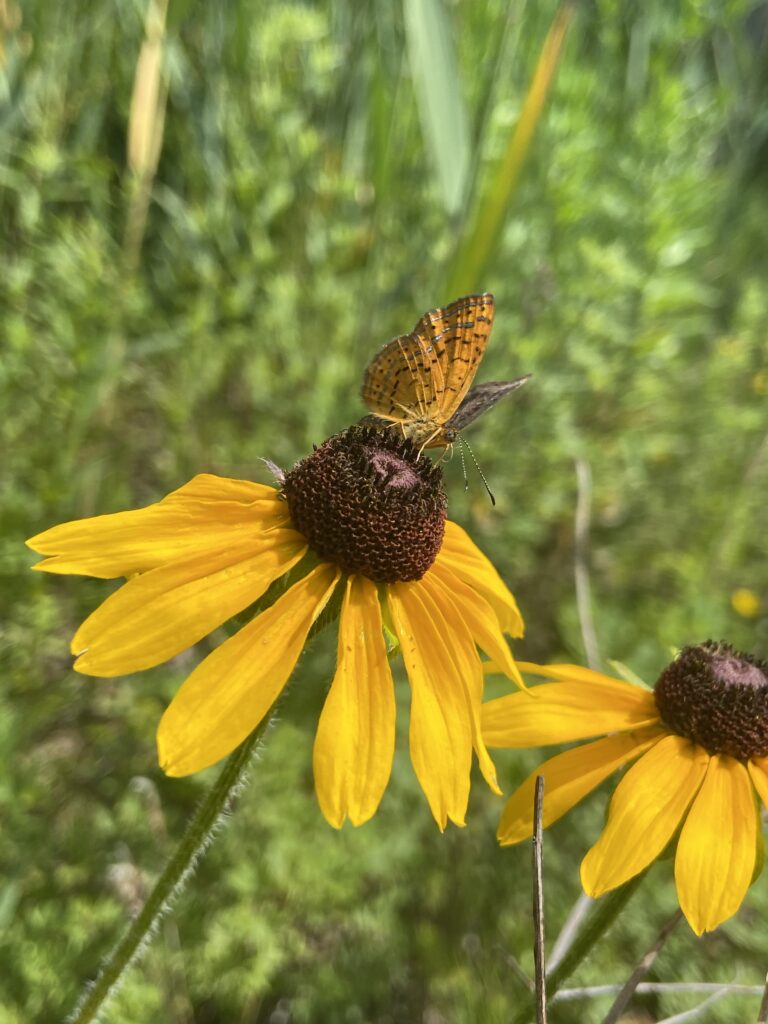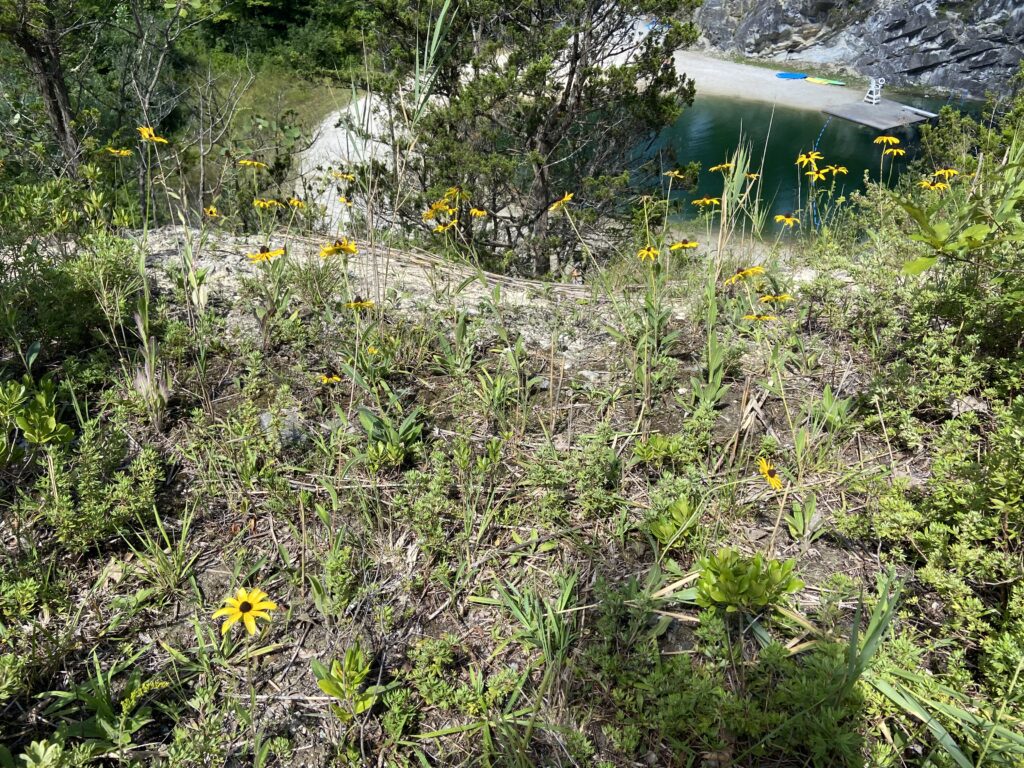Of the 117 butterfly species documented in Connecticut, the northern metalmark (Calephis borealis) features brown and delicate wings of ochre ringed with a hint of shimmery silver, with a wingspan of 1 to 1-1/4 inches, and two striped antennae with club-like tips. Without descriptive anchors, one might miss the tiny, locally endangered, and globally rare butterfly among its three known major populations in New York state, central Pennsylvania through West Virginia, and even near Highstead in Western Connecticut.nd even near Highstead in Western Connecticut.

These isolated butterfly populations are indicators of a specific and aged land history, consisting of alkaline-rich limestone bedrock, eastern redcedar (Juniperus virginiana), and ecotonal woodland habitat, all of which provide conditions for roundleaf ragwort (Packera obovata) to support northern metalmark larvae and nearby its adult nectar sources like fleabane and black-eyed Susan.
“Northern metalmark habitat is disappearing because of development and invasive species, threatening the existence of the butterfly,” said Highstead Executive Director Geordie Elkins. “Other species with larger dispersal areas can move, making them more resilient to change and habitat disruption. Since the metalmark has such a short flight range, it’s essentially immobile, making it less resilient and more vulnerable to habitat destruction.”
But the northern metalmark’s Connecticut story doesn’t have to end there. As it happens, habitat supporting a northern metalmark population was recently identified in Fairfield County, but not without the challenge of invasive plant competitors. For the past 30 years, Conservation Director Bob Eckenrode has served at the site and has aided in the restoration effort. He has recruited volunteers and partners to help in this work, including staff from the state Department of Energy and Environmental Protection, UConn, the Connecticut Botanical Society, and the Yale Peabody Museum. “It continues to be an honor to be working together caring for this special place,” he said.
With permission from the landowners, local lepidopterist and Connecticut Butterfly Association (CBA) board member Victor DeMasi, CBA volunteer restoration coordinator Faith Novella, Audubon Connecticut, and the Connecticut Botanical Society, along with Highstead, are together restoring the rare site for northern metalmark butterflies and the native plants they depend on.

What began as an invasive plant management plan eventually grew into a comprehensive and collective effort. “You’ve got butterfly experts, landowners who are concerned about the environmental quality of their property, and Highstead, and each person is bringing their own expertise and capacity to what really is a genuine collaboration,” said Geordie. He described Highstead’s initial involvement. “The native plants that the butterflies need to survive were being outcompeted by phragmites, swallow-wort, bittersweet, and all the regular invasive plants. Victor and Faith began invasive plant removal, and then they wanted to come back and supplement with native plants. We felt it was important to get plants that actually came from that site and had the same genes that are suited to the highly specialized soil.” Geordie continued, “Additionally, there are a number of Connecticut species of special concern that grow on the site. The entire site is unique beyond the metalmark. It’s the whole suite of plants that allow for the butterflies.”
Last fall, Highstead collected seeds from black-eyed Susans, the primary northern metalmark nectar plant, as well as some of the other specialized plants that make this site so rare. Last winter, Highstead staff germinated the seeds in the greenhouse, growing between 500 and 600 plant plugs. This spring, Highstead staff worked with Faith to plant them back into the site. “They look great and are mostly growing well and flowering despite the drought. We were kind of worried because the site’s soil is thin and dry due to the limestone ledge,” Geordie said. “However, when we planted the plants, there was about two weeks’ worth of intermittent rain which was enough to get them well established.”
The restoration team continues ongoing nectar augmentation, invasive plant weeding, and consistent care for native ecotype plants. Geordie emphasized the careful balance between working and making space for the northern metalmark. “Because the butterflies are always on the site in either butterfly form, egg, or larval form, we’re trying to be really careful about how many people are in there working at a time, so there aren’t people trampling the area.”
While significant progress has been made to restore and increase northern metalmark habitat, the site will require year-round maintenance to keep invasive plants from outcompeting beneficial butterfly flora. This past summer, Yale Conservation Scholar Beau Martinez worked with Geordie to develop a field identification guide to the invasive plants within the northern metalmark conservation area. The guide includes an annual schedule of invasive removal, by the season. While the guide was created specifically for site restoration volunteers, others may find it helpful in creating their own invasive plant identification guides.
Resources
- New York Natural Heritage Program. 2022. Online Conservation Guide for Calephelis borealis. Available from: https://guides.nynhp.org/northern-metalmark/. Accessed August 9, 2022.